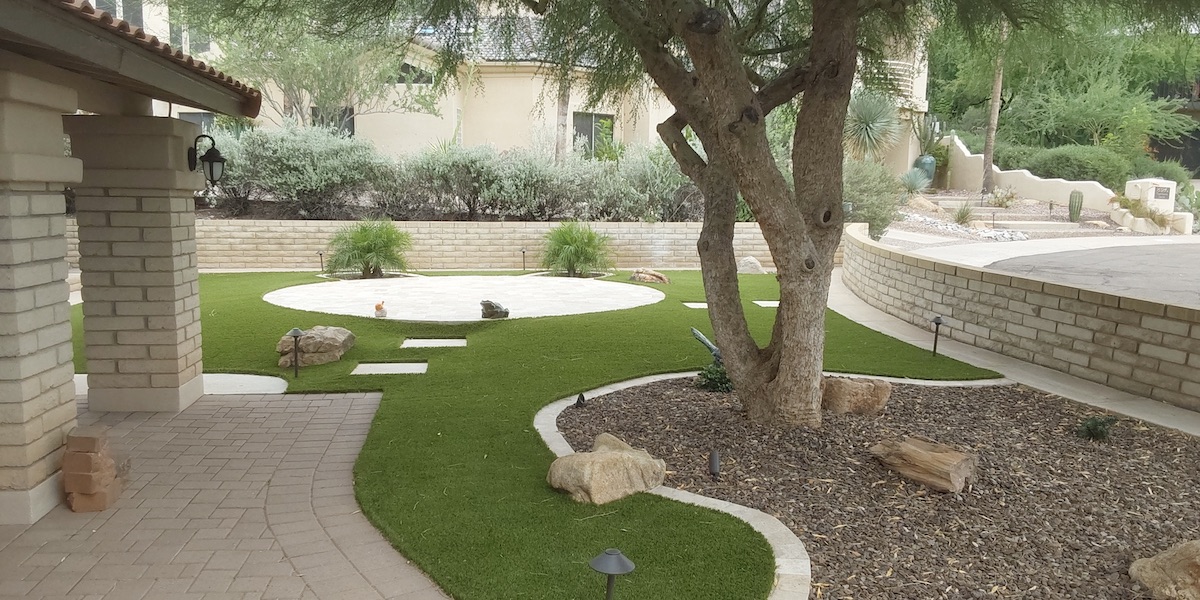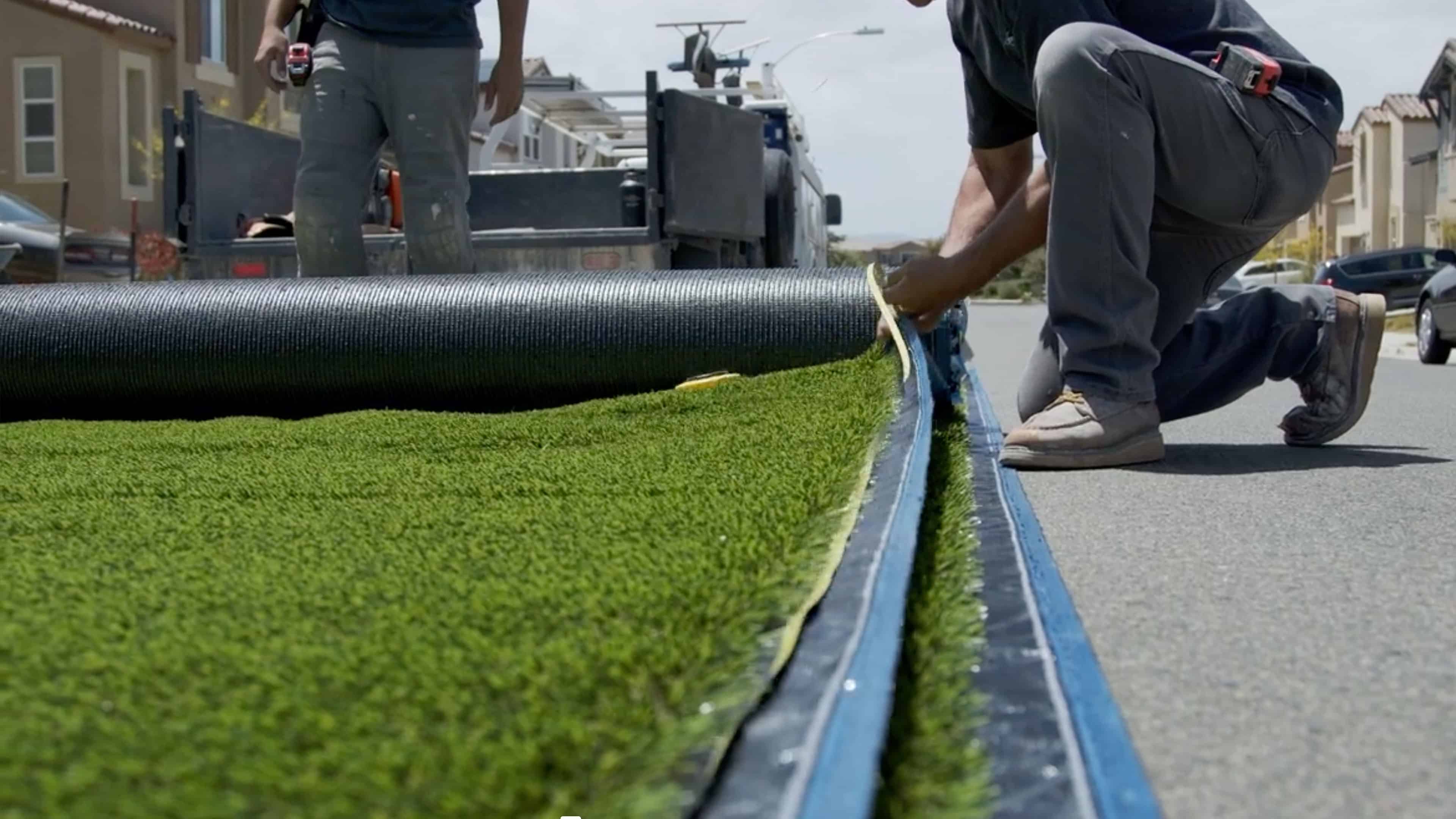Top Factors to Think About Artificial Yard for a Lush and Low-Maintenance Yard
As property owners increasingly seek sustainable services for outside rooms, synthetic lawn presents an attractive option to typical lawns. The benefits extend beyond mere looks and sustainability; exploring the diverse ramifications of fabricated turf reveals a comprehensive approach to lawn management that merits much deeper factor to consider.
Year-Round Greenery
Among one of the most substantial advantages of man-made grass is its capability to give year-round plant, regardless of environment problems. House owners commonly face obstacles in preserving a dynamic lawn because of seasonal modifications, dry spells, or heavy rainfall. Synthetic yard gets rid of these problems, guaranteeing a constantly rich look throughout the year.
This artificial choice is crafted to hold up against diverse climate circumstances, from sweltering summer warmth to freezing wintertime temperatures. Unlike natural lawn, which might brown or end up being patchy throughout severe problems, artificial lawn preserves its vibrant shade and structure, boosting the visual appeal of any landscape.
Furthermore, artificial lawn is immune to pests and conditions that generally influence all-natural grass. This strength adds to its long-lasting elegance, as there is no need for chemical treatments or fertilizers that can be dangerous to the atmosphere. Additionally, homeowners can delight in the visual advantages of a properly maintained yard without the cyclical challenges presented by natural yard treatment (turf installation).
Lowered Maintenance Initiatives
Fabricated yard substantially minimizes maintenance initiatives, permitting homeowners to delight in a beautiful grass without the taxing jobs connected with all-natural turf treatment. Among the most noteworthy benefits of artificial lawn is the removal of regular mowing. With no need for a lawnmower, homeowners conserve both time and the price of maintenance related to this equipment.

Cleansing fabricated lawn is uncomplicated; a simple rinse with a hose pipe or the periodic brushing to remove particles is normally sufficient - artificial grass canoga park. This convenience of care allows house owners to invest more time enjoying their outside spaces instead of struggling over them. In summary, the reduced maintenance efforts related to synthetic yard make it an attractive option for those seeking a stunning, easy lawn
Water Preservation Benefits
The substantial decrease in upkeep initiatives associated with synthetic grass extends to water conservation, making it an eco-friendly choice for house owners. Traditional lawns call for significant quantities of water to stay lively and lush, frequently resulting in too much water use, specifically in arid regions. In contrast, man-made grass removes the need for routine watering, dramatically decreasing the overall water consumption in your lawn.
By going with synthetic turf, property owners can conserve countless gallons of water yearly. This shift not just advantages private homes but also adds to more comprehensive environmental initiatives targeted at lowering water waste. In locations experiencing water scarcity, the fostering of synthetic turf can play a substantial function in reducing the effects of dry spell and making certain that beneficial water anonymous resources are used extra successfully.
Furthermore, the installment of artificial grass can assist lower community water demand, benefiting the neighborhood in its entirety. With expanding understanding of environmental concerns, selecting synthetic yard serves as a positive step in the direction of lasting landscaping, helping to preserve natural water resources while keeping a visually pleasing outdoor space (artificial grass installation). In summary, man-made grass offers a compelling remedy for water conservation, straightening environmental obligation with contemporary landscape design demands

Bug and Allergy Decrease
A significant advantage of setting up artificial lawn is its ability to lower insects and irritants in outdoor areas. Typical grass lawns usually offer as breeding premises for pests such as mosquitoes, ticks, and ants, which can create pain and health dangers for pet dogs and families. On the other hand, artificial lawn removes the natural material that attracts these parasites, consequently dramatically lowering their populations in your backyard.
In more tips here addition, natural yard can harbor mold, plant pollen, and various other allergens, which can set off allergic reactions and breathing problems for sensitive people. Artificial turf provides a cleaner atmosphere, minimizing the capacity for allergenic responses. Unlike all-natural lawn, man-made lawn does not generate pollen, making it an exceptional choice for allergic reaction victims seeking to appreciate their exterior areas without the danger of flare-ups.
In addition, the lack of dirt in synthetic grass implies there is less dirt and dirt, further minimizing air-borne irritants. This low-maintenance option not only improves the aesthetic charm of your backyard however likewise promotes a healthier exterior environment, enabling families to appreciate their lawns without the consistent fear of allergens and pests. Hence, fabricated lawn is description a critical option for those focusing on convenience and wellness in their outside living rooms.
Long-Term Expense Savings
Investing in synthetic lawn can lead to significant lasting cost savings for homeowners. Man-made yard removes the demand for routine lawn maintenance expenditures, such as mowing, fertilizing, and watering.
Moreover, the durability of artificial turf further boosts its cost-effectiveness. Many top notch man-made turf products can last 15 to 25 years with minimal maintenance, lowering the requirement for replacement or extensive fixings. On the other hand, all-natural turf may call for regular reseeding and regular treatment, which can rapidly build up in prices.
Utility savings are an additional vital factor. House owners can expect to see reduced water bills, as artificial grass does not call for watering. Furthermore, the reduction in yard care solutions can free up valuable time and sources, enabling homeowners to designate their budgets in other places.
Conclusion
In summary, man-made yard offers numerous advantages for home owners looking for a vibrant and low-maintenance landscape. Eventually, the long-lasting expense financial savings connected with artificial turf solidify its status as a practical and sustainable service for enhancing outdoor spaces.
Synthetic yard significantly reduces maintenance initiatives, permitting home owners to take pleasure in a pristine grass without the taxing jobs linked with all-natural turf care.The considerable decrease in upkeep efforts associated with fabricated grass expands to water preservation, making it an eco pleasant option for property owners. In contrast, artificial grass removes the need for routine watering, substantially lowering the general water consumption in your yard.
In locations experiencing water shortage, the adoption of fabricated lawn can play a substantial function in mitigating the results of drought and ensuring that beneficial water sources are utilized more successfully.
With growing recognition of environmental issues, picking artificial grass offers as an aggressive action towards sustainable landscape design, helping to maintain natural water resources while preserving an aesthetically pleasing exterior space.